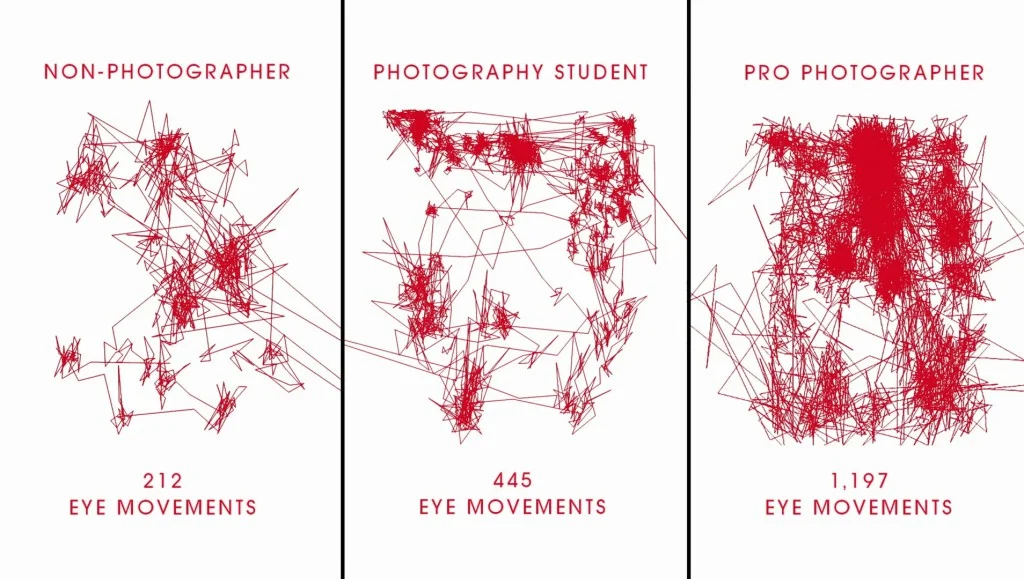What is it?
Enjoying art is something we all enjoy in one way or another. We assume it is a subjective subject, but there may be an objective angle that we can observe art from. Perhaps art isn’t subjective at all? Neuroaesthetics is a scientific approach to art in the way it is both produced and consumed, and this gives us a basis for figuring out what makes art… Art!
The description is in the name. The beginning “Neuro-“ is Greek for the nervous system which finds its roots in our brain. Aesthetics is also Greek and it most directly translates to “I perceive, feel, or sense”. So, we can discern that this study of Neuroaesthetics deals directly with the way our brain perceives and feels about the signals it is receiving. This may be any of our five senses and may even extend past what is immediately present and rely on past experiences as well attached to the individual.
How we react to different stimuli defines art. The colors, shapes, and sensation of movement interact with our minds in unique ways that cause us to feel something. The ’something’ that we experience is what Neuroaesthetics attempts to figure out. Does art follow a set of rules? What makes humans inclined to feel something about art, and more importantly, why does art make us feel these ways/where does this feeling come from?
How is it studied?
While it is still a relatively new field of study only being fully defined 2002, there is a combination of varying fields preceding it that establish grounds for how it may proceed. The study of Neuroaesthetics uses the functional brain anatomy along with an understanding of psychology to learn about how they work in tandem with the human perception of art and how that impacts the person as well. It also uses a historical perspective with evolutionary biology to learn where we came from in order to get to where we are today in relation to art. This is what links back to the cave drawings our earliest ancestors drew thousands of years ago. It is figuring out why they did them and how those show their relationship with the art on those cave walls linked to their lives.
The brain has a very direct impact on how we create and interpret art. There are different areas of the brain where specific activities are related to. These linkages could be studied and connected with how they are either active or dormant when connected with art. Learning what types of art create unique synapses in the brain when the art is being created and consumed may prove very helpful in establishing a better understanding of the human connection that exists between the two.
Learning about how much actual thought art takes is another interesting angle Neuroaesthetics can take. Is it mindless or does the creating/consuming of art take more work? There are studies that exist which examine the way different people interact with art. Perhaps there is a difference in how artists interact with art, doing so in a more active way. There is also the angle to view the subject from as to whether or not we are more/less active when creating art vs enjoying viewing it. The answer may be a mix or even that it depends on the individual, and there is nothing conclusive yet. It is certainly interesting to see what level of stimulation art creates in individuals in varying circumstances.
The Science Behind Neuroaesthetics
The brain acts like a human processor for the information our senses bring in and interact with what our past experiences tell us. It is the perfect place to start a scientific approach to art, from the inside (literally). There are many areas of the brain that Neuroaesthetics can focus on including the prefrontal cortex, orbito-frontal cortex (OFC), frontal lobe, bilateral occipital gyri, the prefrontal dorsolateral cortex (PDC), and many others. They each have their own purposes for processing different types of information and directly influence our ability to perceive or feel something about a piece of art.
The area of the brain that is in charge of our memory, decision making, and perceiving colored objects is the prefrontal cortex. This obviously has a major influence on how we interact with visual arts and may have a larger influence than is immediately obvious. It may have an impact on how we consciously experience aesthetic stimuli because of it being the area of the brain where our memories and perception of colored objects meet and potentially interact to influence art. Given that this is where our decision making is done it may be that our memories combined with the visual impact influence our artistic decisions.
https://www.diyphotography.net/canons-experiment-shows-how-obsessed-photographers-are-over-the-details/
When presented with art that is beautiful we inherently have a reaction. Beautiful images alone don’t make for good art though and there may be an explanation behind this. When the brain is presented with something it sees as beautiful aesthetically the orbito-frontal cortex (OFC) shows a significant amount of activity. However, this is not the only time the OFC shows a response because when given a description giving context to a piece of art will also generate activity in the OFC. The activity can be linked to this area of the brain’s reward system which shows how both beautiful art and a meaning behind the art can bring value.
Different types of art may also be linked to their own definitive sections of the brain. While representational art may cause parts like the occipital gyri to show increased activity due to it being linked to object recognition, memory, and attention. A more abstract image may produce a different resulting map of activity in the brain showing a higher concentration in the bilateral fusiform gyrus and left cingulate sulcus. All of this data leads to a more simple and interesting conclusion when it comes to how our brains recognize and process art. As Anjan Chatterjee states in his TEDMED talk, “Our brain automatically responds to beauty by linking vision and pleasure”. You don’t have to be thinking about how beautiful something is for the brain to recognize when it is seen.
Artistic Theories
There is a great importance placed on beauty in our world. There is a challenge in defining what it is and how that may be applied in art and science. Perhaps they are inevitably linked through the one consistent variable, us people. Neuroaesthetics attempts to help clarify the muddied waters with scientific evidence and theories. These theories, unlike artistic ‘rules’, are more objective than subjective because they link to our internal wiring as humans. Let’s take a look at some of them from a worldview as an artist.
Averaging
An interesting experiment that was done in the 1800’s by Sir Francis Galton was originally focused on finding the “face of crime”. He used projections of multiple faces of criminals averaged out to their most basic features and the result wasn’t what he had expected. It was beautiful. This idea that an average looking subject is generally more attractive than one with traits that diverge severely from the mean. It is called ‘Averageness Hypothesis’ and it is fascinating!
Whether or not this applies to landscape photography remains to be seen or studied with intensity. However, we can look at traits that are seen as most desired vs those despised in the community. Techniques pushed to their extremes when practicing photography like HDR tone-mapping are seen as ugly while a more subtle effect of using luminosity masks works well.
Example of averaging faces can create a more attractive image. http://faceresearch.org/students/averageness
Ramachandran’s Eight Laws of Artistic Experience
Vilayanur S. Ramachandran and William Hirstein along with others created a set of laws which they believe preside over art through their paper titled “The Science of Art: A Neurological Theory of Aesthetic Experience”. I won’t be going into detail with all of the ones provided in their theory, but it will be interesting to dive in on a couple to see how they apply.
Symmetry
The composition of an image being symmetrical is a common one. It has become even more popular with apps like Instagram encouraging it through the layout of the screen an image is viewed on. It is easy to tell where the visual appeal of symmetry comes from as biological evidence exists for its importance. Symmetry is used in our brains to recognize the suitability of a mate while asymmetry is linked to infection and disease. This evolutionary evidence shows how we can link the pleasure parts of the brain to something beautiful artistically that is symmetrical. It is also something we see a lot of in nature either from reflections in water, leaves, snowflakes, flowers, etc…
The symmetry of the reflection of the mountain in the water below.
While symmetry can be linked with natural beauty it doesn’t tell the whole story. Asymmetrical images can also be beautiful in a different way by relying on other relatable human emotions that exist. There is no one pathway to reaching the pinnacle of art and beautiful images. Symmetry is just one of many ways to activate aesthetically-related sections of our brain, and combining multiple theories will help to explain why some art works and others don’t.
In landscape photography, symmetry might not just be obvious symmetry but also symmetrical balance in visual weight throughout the image. This can be done by balancing objects, color, luminosity, and/or mood. This helps to create a consistency in the frame that is cohesive and works well with our brain’s idea of natural beauty even in the most untamed parts of our natural world.
Grouping
There is a natural tendency as humans to want to look for and find groupings/patterns in a noisy background. The reason behind this is our brain encouraging the behavior of uncovering camouflaged objects as a survival instinct. It rewards us with endorphins when we see a subject separated from a confusing background. The brain creating a pleasant sensation as a reward shows why grouping works as an approach to creating compelling art. Art that is most successful at triggering this reaction does so through causing an initial confusion which helps the signal a reward once the brain recognizes the subject of the image.
Isolation and Contrast
In drastic contrast to the theory of grouping, we can look at how art that is devoid of distraction. This approach focuses on a set of defining characteristics of the subject in order to allow the viewer to allocate more time towards appreciating the simplicity of the art. A blank canvas allows for the person viewing the art to project their own emotions and feelings onto the work filling in where the artist left off. Think like a cartoon that is left in black and white can be better than when it is colorized.
When the art is left very simple in color and in detail, the brain’s limbic system is amplified and has increased levels of reinforcement and activity. This scientific explanation helps to illustrate how the minimalism movement has been so successful in recent decades. Compared to complex abstracts and representative art this approaches the brain’s reward mechanisms in a new way tickling our human sensations. The beauty of it is that however you feel about this type of art is considered valid so long as you feel something.
Similar to the Idea of Isolation, Contrast tries to show a clear subject in the art. The approach is very different though because instead of focusing on one thing it tries to show harsh changes in color and luminosity. Our brains find gradients of shades across a canvas difficult to detect and therefore approaching with drastic angles and edges may help our brains to stay tuned in. Keeping our attention is as important as ever and contrasting elements close together help to do so.
Peak Shift Principle
This theory is based on the idea that our brains can recognize patterns and react to exaggerated versions of specific features. If an artist chooses to emphasize size, scale, color, etc to communicate something ‘larger than life’ we can recognize this and associate it in our brains with appropriately larger stimuli. It has even been studied in animals being able to recognize small differences in objects and after learning about a reward associated with integrating with certain traits they will still react to exaggerated versions of those same traits.
As artists, it is possible to apply this theory through the usage of dodging/burning, lenses (as photographers), different types of light, and blending of different techniques to communicate a specific message. This will create an increased level of activity in the brain that is not obvious/unconscious to many viewers.
Semir Zeki’s Laws of the visual brain
The idea behind this theory is that art is something that shows variability in the brain. Semir Zeki believes that by approaching the subject in a reversed direction from art towards science to understand the science instead of using science to understand art will help us to get a better picture of what is really going on. By using art that artists create we can see how they affect the brain itself. He uses two specific theories to help us understand our visual brain. Constancy, which is the idea that our brain can recognize and understand objects in art because of our outside experiences. Abstraction, on the other hand, tells us that due to limitations in our brain’s memory created a necessity to make inferences about things that we might not fully understand.
"...the artist is in a sense, a neuroscientist, exploring the potentials and capacities of the brain, though with different tools. How such creations can arouse aesthetic experiences can only be fully understood in neural terms. Such an understanding is now well within our reach.” - Semir Zeki
Wrapping Up
Our brain can tell us a lot about ourselves. It can teach us why we feel certain ways about art, and most of these conditions happen unconsciously while viewing art. The human brain works off of a rewards mechanism that is designed to keep us alive, but art can be used to trigger these systems of rewards that exist to make us feel a specific way. The study of what parts of the brain react to different art forms helps us understand how we think and understand.
The art in our world can also tell us a lot about how our brain works. Perhaps the greatest artists understand how the brain works and have created their art to target our human brains. Manipulating us to naturally attach value to art because it forces neurological synapses that we like. Almost as though they are manufacturing a natural drug meant to make us feel certain ways based on pre-existing evolutionary traits. Whatever the case, Neuroaesthetics plays an important role in explaining your brain on art.
This is how science meets art. The objective and methodological approach to something we thought to be entirely subjective. A scientist can show you a round watch and a square watch. It is more likely that you will like the round one, and that is fine. What does that matter? Exploring the “why” behind our behavior is important because it helps to explain how our brain reacts to different things around us, including (and perhaps most importantly) art.



